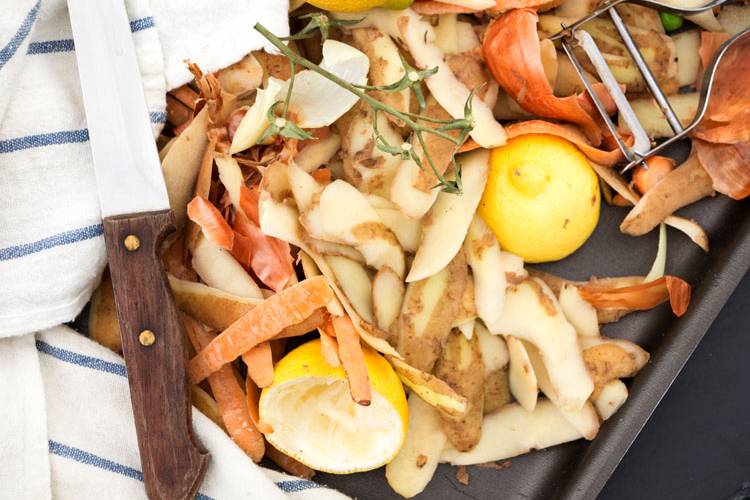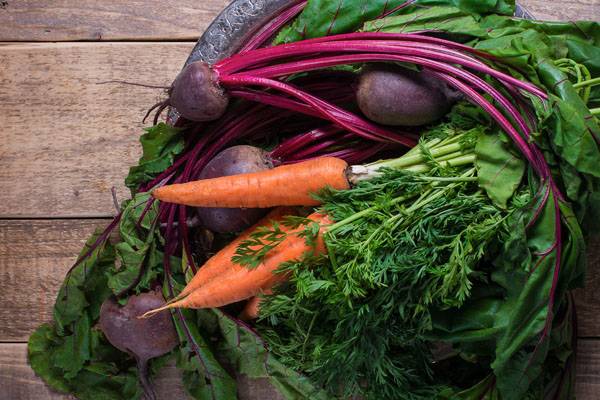How to take advantage of the vegetables
The definitive guide to using the parts of the vegetable we always throw away. Making using of the stalks, leaves, skins or pods of vegetables isn’t just a question of saving money but avoids food wastage and also allows us to enjoy new flavours. What you’re missing out on!
how to shop
Share

In the same way that we use the head and spine of a fish to make a good fish broth, we shouldn’t throw away the green part of a carrot or potato peels. Making using of the stalks, leaves, skins or pods of vegetables isn’t just a question of saving money but avoids food wastage and also allows us to enjoy new flavours and textures that we haven’t discovered before.
The skin of the vegetables
Onions
This is your best friend when it comes to broths, soups and sauces. When well chopped up it can be added to stews or it can be dried out in the oven and powdered. We can also use it to flavour breadcrumbs if you mix in small bits. It really intensifies flavours and, what’s more, gives dishes a golden touch.
Potatoes
We can add potato skins to any broth. A more attractive option, however, might be turning them into crunchy snacks. How? Wash them well and roast them at 200 ºC with a little oil, salt and spices to taste.

The leaves of the vegetables
Leeks, onions and springs onions
Although these leaves can seem more fibrous when they’re raw, we can use them to enrich a broth or add them to soups or pottages where they soften. However, they should always be well washed.
The higher parts of onions, leeks and spring onions, which are greener, can be used to add more flavour to scrambled eggs, omelettes or savoury pastries like quiches, as well as adorning dishes like we often do with chives.
Radishes, turnips and parsnips
The leaves of radishes and turnips are tender and perfectly edible. We can use them alongside the vegetable itself and eat them raw. The leaves of turnips, called turnip greens, are highly prized in some parts of northern Spain like Galicia. They can be eaten raw, cooked, sautéed or added into any soup.
Carrot
With a slightly bitter taste, the leaves of a carrot, when well chopped up, are a great garnish for any kind of dish, substituting aromatic herbs like parsley, oregano or basil. In fact, it makes a wonderful pesto.
If you want to aromatize oils or butters, chopped carrot leaves give them a special edge, both on their own and on other times of herbs.
Beetroot
For anyone who tends to use fresh beetroot in their recipes, you might be interested to know that the leaves and stems are perfectly usable. In fact, if you use them like you would chard or spinach then they’ll surprise you with their flavour, which is much softer. They can be boiled, sautéed or added to omelettes or scrambled eggs.
They can be also used raw to prepare smoothies or juices and even in salads.
Cabbages: cauliflower, broccoli, etc.
Like beetroot, the leaves of the cabbage family work really well in broths and vegetable soups. What’s more, if they’re small and tender, like broccoli, they can even be eaten raw.
Artichokes
The artichoke is a vegetable that, to be cooked well, needs a lot of its leaves taken off as well as, usually, the stalk. This is a real waste, but it needn’t be. If the leaves are tender they can be fried for tasty and crunchy snacks. On the other hand, if they’re tougher they can be used for all kinds of stews and soups.
Fennel
Fennel leaves are often used to flavour pickles or as a substitute for aromatic herbs. Their soft, sweet and aniseed flavour makes them perfect for juice and smoothies as well as for salads, stews, soups, or simply to sprinkle on dishes before serving them to give them a slightly different flavour.

The stalk
Broccoli, cauliflower or artichoke
Raw, cut into fine slices, sautéed, boiled or steamed and accompanying the florets, the stalk of broccoli, cauliflower and artichoke, if you remove the outside, becomes very tender. Of course, this is perfect for any type of vegetable soup.
Leek
The green part that any leek has inside it is perfectly edible. It fact, it’s got a softer flavour. You can use it in soups, omelettes or even as a garnish.
Pods
Peas and beans
When fresh beans and peas are in season, we waste all kinds of pods. Rather than throwing them away, we can boil them up with other vegetables to enrich soups. You can also roast them under the grill and eat them whole if they’re not too thick. And, of course, if you boil them and then mash them up, you’ll get a really eye-catching green juice that you can use as a base for sauces and vinaigrettes.






